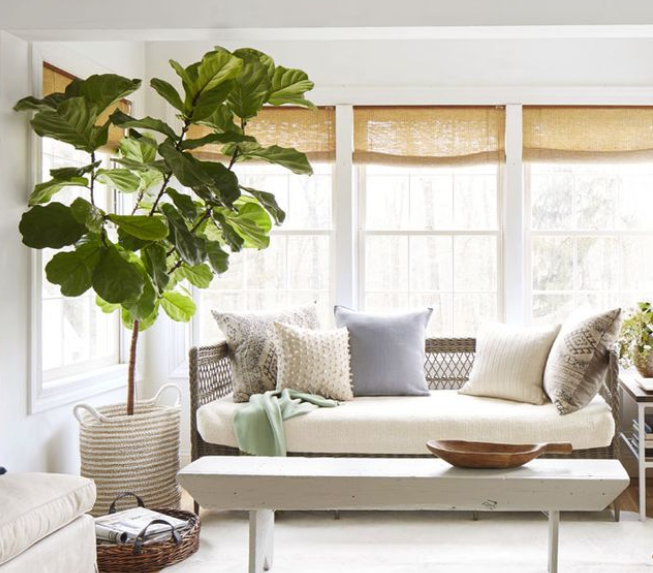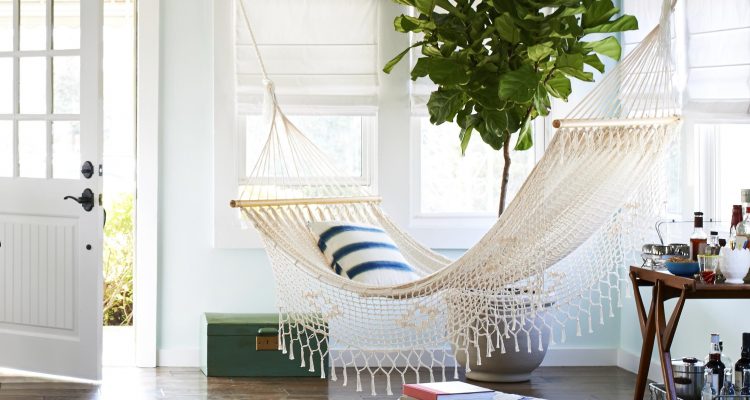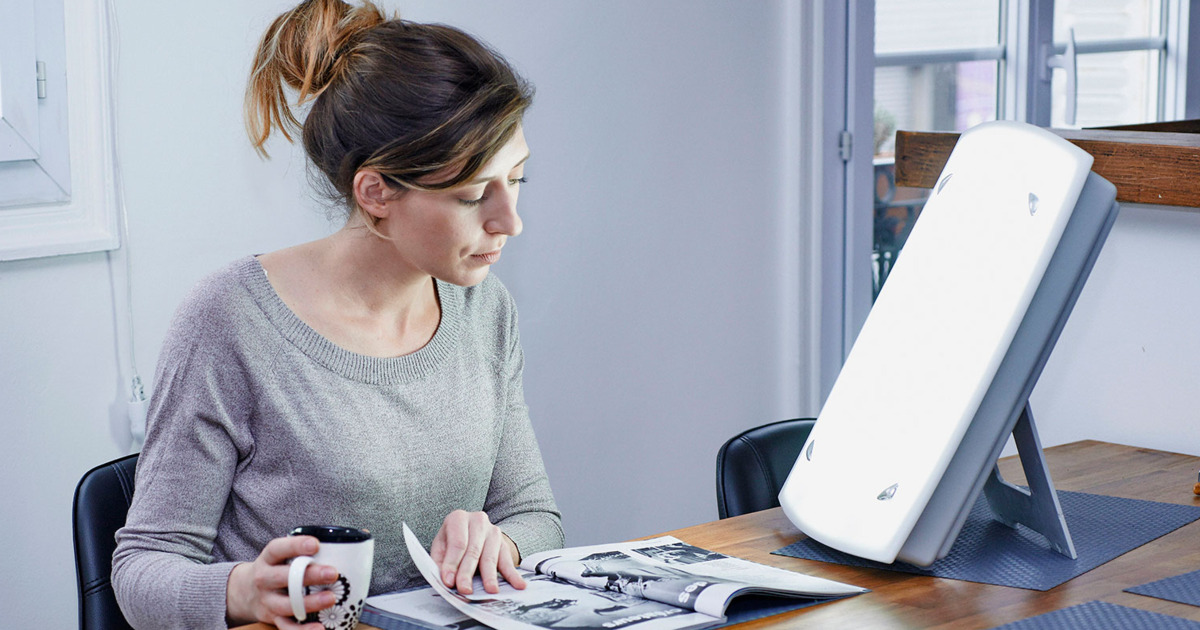How To Put Together a Stress Free Home
If you have a stressful job then you need to make your home a stress free zone.
Or even if you suffer from stress in general or get easily stressed, then you must put some measures in place to make your haven a stress free home.
You might not be able to control the situations and environments you are in outside of your home (work, unhelpful relatives etc.), but you can control your environment and surroundings in your home.
So let’s look at nine ways you can make your home a sanctuary and to use your home for stress relief.
1) Fill Your Home With Plants
I knew plants played a major part in making your house a home but I had no idea how much they contributed to relieving stress.
I was watching a TV program about stress, literally just the other day, and the stress consultant filled an office, with about 20 workers in it, with big large, green leafy plants.
This stress consultant said that not only offices, but homes too, can benefit massively from plants because simply looking at plants reduces your stress by approximately 40%.
Say what!!

And I think he’s right. As I sit writing this, I’m thinking of those large leafy plants the stress consultant put in that open-plan office (they were massive plants) and you know what, I do feel a sense of calmness when I envisage them in my mind.
I don’t know the psychology of this to explain exactly why having plants in your home is very stress relieving, but I heard it first hand from a stress expert and all of those 20 office workers agreed with him that they loved the plants and they wanted them to stay in the office.
So if you like plants, then go out to your local garden center (or buy them online and get them delivered) and put them in places where they are on full view to you.
If you don’t have much floor space, consider getting some hanging plants or plants to put in hanging baskets and hang them on walls or in window spaces.
Just have fun with your new plants and be creative!
2) Mindfulness
Everyone’s aware of how important mindfulness is these days, and quite rightly so.
Mindfulness is amazing and very effective at not only to relieve stress but for weight loss too. Although I actually think that those two are connected in that it’s easier to lose weight when you’re not stressed as much. But that’s another subject for another day!
Mindfulness is when you literally cut yourself off from the outside world and you’re left with just your own thoughts for the present moment.
- So don’t think of past thoughts – as these can lead to depressive thoughts.
- And don’t think of future thoughts and circumstances – as these lead to anxious thoughts.
This is the whole point of mindlessness, to think in the present moment and block out any depression or anxiety.
To be calm.
Your aim should be to do about 15-30 minutes per day of mindfulness.
There are many phone apps now with mindfulness or have a look on YouTube where there are plenty of videos on mindlessness specifically for relieving anxiety even if its just for that short period of time.
3) Have a Zen Space
Again, going back to the stress documentary I watched, the stress consultant put a pod (like a little mini wigwam) in the corner of the open-office.
The staff took it in turns to have twenty minutes or so to go into the pod to relax and unwind. Some done their mindlessness work, others just listened to music and I think some others took it for some shut-eye and a little doze.

While you don’t have to go to the extent to construct a pod or mini wigwam in your home (well, you can if you really want to), try and create a sanctuary space in a corner of a room or have the whole room as your sanctuary.
This is where you do your relaxing in your zen, stress-free zone.
As with the people in the office from the TV documentary, you can:
- Do your mindfulness here.
- Listen to relaxing music.
- Read a relaxing book (probably best not to read a murder mystery!)
- Write poetry, or
- Just close your eyes and relax.
4) Technology Free Time
I think you already know that technology is a major factor which contributes to stress and anxiety.
Your cell (mobile) phone being the number one culprit.
With that one device you’re available to:
- Receive text messages.
- Get notifications from WhatsApp, Snapchat and any other social app.
- Look at social media (this can be very detrimental in causing anxiety).
So in order to help your mental health and anxiety levels, switch off your phone for a large portion of your day. You can always turn it on and check for urgent messages or missed calls periodically.
5) Your Bedroom
Over the years I’ve watched a small handful of TV documentaries on sleep deprivation and we’ve (me and my husband) have picked up a few really handy tips when it comes to getting a good nights sleep.
- Did you know that sleep in a very important factor when it comes to reducing stress.
Yes, if you don’t have a good nights sleep then you’re more than likely to have higher levels of stress and anxiety.
Experts say you should get a minimum of eight hours sleep per night. Personally, I never get anywhere near that. I’ll be lucky if I get five hours sleep each night and even then that’s broken sleep.
Do you get your full eight hours sleep?
If not, here are some tips to help you get more sleep each night:
- Sleep experts say to have a window open, leaving your bedroom cool, but your warm tucked in bed. The reason being is that it allows for a better CO2 balance in the bedroom which, in turn, leads to better sleep quality
- Make your bed each morning. You will feel much calmer coming back home to a made, neat bed than an unmade one.
- Don’t read your kindle, tablet or phone as the last thing. Blue light. Read an actual book before you turn the light off.
- Use a light alarm clock. A light alarm clock simulates the rising sun, therefore making you wake-up quietly and naturally.
6) Declutter
Now we get onto decluttering your home – or keeping it decluttered if its already reasonably tidy.
Having a messy, cluttered home is definitely not good for a calm mental state. And definitely not for your home stress relief sanctuary!
So put some time aside to tidy:
- Any rooms which are messy
- Wardrobes
- Cupboards
- Draws
- Outside areas
However, be careful not to stress about any cluttered areas in your home as this is counter-intuitive in this case.
Just take your time and do one area at a time.
The top tip to declutter effectively is to separate the stuff you need, want to keep and stuff which can be given away to charity shops or even put in the bin, a skip (dumper) or taken to your local tip.
7) Let There Be Light
Natural sunlight is one of the best medicine’s there is. Obviously being outside is the utmost best, but the next best is to have natural light shining through your windows into your home.
However, we can’t all benefit from lots of natural light simply because:
- You don’t have many windows in your home or they are small.
- You do have windows, but when the sun does comes out, your room is in the shade.
- The sun doesn’t come out and it’s a dark, dreary day or week.
If you can’t have natural light into your home for any of the above reasons, there is a solution.
Have you heard of a SAD light?
SAD Light
Also known as a SAD lamp, it’s for people who suffer with Season Affective Disorder. SAD is when people feel really low or depressed during the winter when the days are long and dark.
The SAD lamp (or Light Therapy Lamp) works by replicating sunlight from the light box.
It’s thought by professionals that the light from the lamp can help improve SAD by inspiring your brain to reduce the production of melatonin – which is the hormone which makes you tired and sleepy – and therefore increasing the production of serotonin (the hormone that gives you that ‘feel good factor’).
8) Choose Your Colours Wisely
I’m referring to your home decor here. The color of your walls, your furniture and soft furnishing.
Of course, this subject can be relative because one person might find orange walls cathartic and relaxing, while those same orange walls might be aggressive and stressful to the next person.
A light sage green is apparently one of the best colors for calmness and its advised for this color to be put in your living room and/or bedroom.
Which colors do you find the most relaxing?

So if you still don’t feel destressed and calm in any of your rooms, take another look at your color scheme and decide if you could change any of the colors to suit your personality better and if these new colors will make you feel less stressful and happier.
You never know, you might could just do with a change of color and decor and this will take your mind of things and make you happy.
9) Keep It Clean
And lastly, keeping a dust-free and clean home is also very important, not only for your health, but for your mental health too.
As with decluttering, take one room, or even one corner of a room, at a time. Make it fun by playing your favorite music – whatever makes you happy!
You could even go as far as creating a check-list of places or rooms that need decluttering and/or cleaning and then once you have cleaned those places, simply tick them off the check-list.
- There’s nothing more satisfying and giving yourself a sense of achievement than ticking off completed projects from a ‘to do’ list.
So now if you ask the question ‘how to be stress free at home?‘, you have here nine ideas to help you turn your home into a sanctuary, hopefully free of stress.
Happy destressing!

